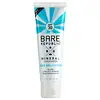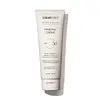What's inside
What's inside
 Key Ingredients
Key Ingredients

 Benefits
Benefits

 Concerns
Concerns

 Ingredients Side-by-side
Ingredients Side-by-side

Zinc Oxide 18.2%
Cosmetic ColorantAcrylates Copolymer
Aloe Barbadensis Flower Extract
EmollientAloe Barbadensis Leaf Juice
Skin ConditioningAlpha-Ionone
PerfumingButyrospermum Parkii Butter
Skin ConditioningCaprylic/Capric Triglyceride
MaskingCaprylyl Glycol
EmollientCitric Acid
BufferingCoccinia Indica Fruit Extract
Skin ConditioningCorallina Officinalis Extract
Skin ConditioningCucumis Sativus Fruit Extract
EmollientCurcuma Longa Root Extract
MaskingDecanal
MaskingDelta-Dodecalactone
PerfumingDidecyldimonium Chloride
EmulsifyingDimethicone
EmollientDimethylheptenal
PerfumingEthyl Ferulate
AntioxidantGamma-Nonalactone
MaskingGamma-Octalactone
PerfumingGamma-Undecalactone
PerfumingGlycerin
HumectantGlyceryl Stearate Se
Emulsifying3-Hexenol
MaskingHexyl Acetate
MaskingJuniperus Virginiana Oil
MaskingLauryl Glucoside
CleansingMelia Azadirachta Flower Extract
Skin ConditioningMelia Azadirachta Leaf Extract
Skin ConditioningMethyl Dihydroabietate
Methylpropanediol
SolventOcimum Basilicum Flower/Leaf Extract
TonicOcimum Sanctum Leaf Extract
Skin ConditioningOlive Oil Polyglyceryl-6 Esters
EmollientPolyacrylate Crosspolymer-6
Emulsion StabilisingPolyhydroxystearic Acid
EmulsifyingPolymethylsilsesquioxane
Polyquaternium-80
CleansingPolysilicone-11
Propylheptyl Caprylate
EmollientSolanum Melongena Fruit Extract
Skin ConditioningSorbitan Stearate
EmulsifyingSorbityl Laurate
EmulsifyingTridecane
PerfumingTriethoxycaprylylsilane
Triethyl Citrate
MaskingUndecane
EmollientWater
Skin ConditioningXanthan Gum
EmulsifyingZinc Oxide 18.2%, Acrylates Copolymer, Aloe Barbadensis Flower Extract, Aloe Barbadensis Leaf Juice, Alpha-Ionone, Butyrospermum Parkii Butter, Caprylic/Capric Triglyceride, Caprylyl Glycol, Citric Acid, Coccinia Indica Fruit Extract, Corallina Officinalis Extract, Cucumis Sativus Fruit Extract, Curcuma Longa Root Extract, Decanal, Delta-Dodecalactone, Didecyldimonium Chloride, Dimethicone, Dimethylheptenal, Ethyl Ferulate, Gamma-Nonalactone, Gamma-Octalactone, Gamma-Undecalactone, Glycerin, Glyceryl Stearate Se, 3-Hexenol, Hexyl Acetate, Juniperus Virginiana Oil, Lauryl Glucoside, Melia Azadirachta Flower Extract, Melia Azadirachta Leaf Extract, Methyl Dihydroabietate, Methylpropanediol, Ocimum Basilicum Flower/Leaf Extract, Ocimum Sanctum Leaf Extract, Olive Oil Polyglyceryl-6 Esters, Polyacrylate Crosspolymer-6, Polyhydroxystearic Acid, Polymethylsilsesquioxane, Polyquaternium-80, Polysilicone-11, Propylheptyl Caprylate, Solanum Melongena Fruit Extract, Sorbitan Stearate, Sorbityl Laurate, Tridecane, Triethoxycaprylylsilane, Triethyl Citrate, Undecane, Water, Xanthan Gum
Titanium Dioxide 2%
Cosmetic ColorantZinc Oxide 17%
Cosmetic ColorantDimethicone
EmollientCaprylic/Capric Triglyceride
MaskingDimethicone Crosspolymer
Emulsion StabilisingDimethicone/Vinyl Dimethicone Crosspolymer
Skin ConditioningButyloctyl Salicylate
Skin ConditioningGlyceryl Isostearate
EmollientPolysilicone-15
UV FilterTetrahexyldecyl Ascorbate
AntioxidantCamellia Sinensis Leaf Extract
AntimicrobialPunica Granatum Extract
AstringentVaccinium Macrocarpon Fruit Extract
AstringentSilica
AbrasivePolyhydroxystearic Acid
EmulsifyingCI 77891
Cosmetic ColorantCI 77492
Cosmetic ColorantCI 77491
Cosmetic ColorantCI 77499
Cosmetic ColorantTitanium Dioxide 2%, Zinc Oxide 17%, Dimethicone, Caprylic/Capric Triglyceride, Dimethicone Crosspolymer, Dimethicone/Vinyl Dimethicone Crosspolymer, Butyloctyl Salicylate, Glyceryl Isostearate, Polysilicone-15, Tetrahexyldecyl Ascorbate, Camellia Sinensis Leaf Extract, Punica Granatum Extract, Vaccinium Macrocarpon Fruit Extract, Silica, Polyhydroxystearic Acid, CI 77891, CI 77492, CI 77491, CI 77499
 Reviews
Reviews

Ingredients Explained
These ingredients are found in both products.
Ingredients higher up in an ingredient list are typically present in a larger amount.
This ingredient is an emollient, solvent, and texture enhancer. It is considered a skin-softener by helping the skin prevent moisture loss.
It helps thicken a product's formula and makes it easier to spread by dissolving clumping compounds.
Caprylic Triglyceride is made by combining glycerin with coconut oil, forming a clear liquid.
While there is an assumption Caprylic Triglyceride can clog pores due to it being derived from coconut oil, there is no research supporting this.
Learn more about Caprylic/Capric TriglycerideDimethicone is a type of synthetic silicone created from natural materials such as quartz.
What it does:
Dimethicone comes in different viscosities:
Depending on the viscosity, dimethicone has different properties.
Ingredients lists don't always show which type is used, so we recommend reaching out to the brand if you have questions about the viscosity.
This ingredient is unlikely to cause irritation because it does not get absorbed into skin. However, people with silicone allergies should be careful about using this ingredient.
Note: Dimethicone may contribute to pilling. This is because it is not oil or water soluble, so pilling may occur when layered with products. When mixed with heavy oils in a formula, the outcome is also quite greasy.
Learn more about DimethiconePolyhydroxystearic Acid is a soft wax made from castor oil.
It is is a texture thickener, emulsifier, and film-former. Emulsifiers prevent ingredients from separating, such as oils and waters.
Polyhydroxystearic Acid may not be fungal acne safe.
Learn more about Polyhydroxystearic AcidZinc Oxide is a mineral broad-spectrum UV filter; it is the broadest UVA and UVB reflector approved by the FDA. It also has skin protectant and skin soothing properties.
Zinc oxide is one of the most effective broad-spectrum UV filters. It protects against UVB, UVAII, and UVAI. In comparison to its counterpart titanium dioxide, zinc oxide provides uniform and extended UVA protection.
Another great benefit? This ingredient is highly photostable so it won't degrade easily under sunlight.
A common myth is that mineral UV filters are widely believed to primarily reflect UV light.
However, modern research shows titanium dioxide absorbs UV radiation like chemical filters (~95% absorption & 5% reflection).
Zinc oxide has great skin soothing properties so you'll likely find this in sunscreens formulated for sensitive skin or babies/children. It is unlikely to cause "eye sting" like other sunscreen ingredients.
Regulatory agencies consider zinc oxide to be non-toxic and safe. It has also been shown to not penetrate the skin.
Unfortunately, this ingredient does leave a visible white cast. This is why mineral sunscreens are often less cosmetically elegant than chemical or hybrid ones.
In cosmetics, zinc oxide can be found in both non-nano and nano-sized forms. The nano version is used to reduce white cast and improve the texture of sunscreen formulas.
There are ongoing concerns surrounding nano-zinc oxide's impact on marine ecosystems and whether it can be absorbed into skin.
Regarding marine ecosystems and coral reefs, there is no conclusive evidence that any form of zinc oxide (or any other sunscreen ingredients) will cause harm. The science is still developing but many consumers are keeping a close eye on this issue.
Please note, many destinations have reef-safety sunscreen rules. For instance, the U.S. Virgin Islands advises all visitors to use non-nano mineral sunscreens.
There has also been some stir about whether micronized or nano zinc oxide has potential photoxicity and absorption through the skin/lungs.
An in-vitro (done in a test tube or petri dish) study demonstrated micronized zinc oxide to have potential phototoxicity. There's no need to fret; the EU Commission's Scientific Committee on Consumer Safety has stated, "The relevance of these findings needs to be clarified by appropriate investigations in vivo." Or in other words, further studies done on living organisms are needed to prove this.
Current research shows zinc oxide nanoparticles do not penetrate intact or sunburned skin. They either remain on the surface or in the outermost layer of dead skin (stratum corneum).
Zinc oxide is one of only two classified mineral UV filters with titanium dioxide being the other one.
Fun fact: Zinc has been used throughout history as an ingredient in paint and medicine. An Indian text from 500BC is believed to list zinc oxide as a salve for open wound. The Ancient Greek physician Dioscorides has also mentioned the use of zinc as an ointment in 1AD.
Learn more about Zinc Oxide